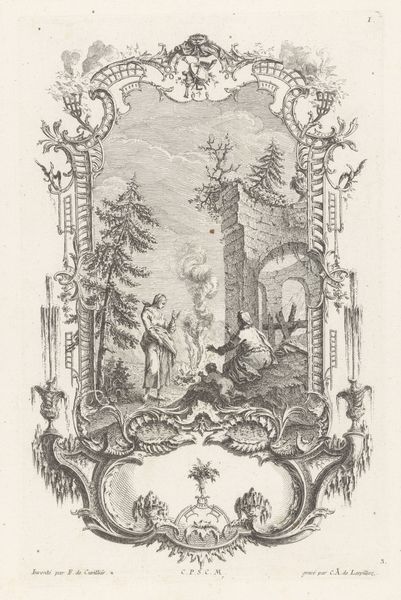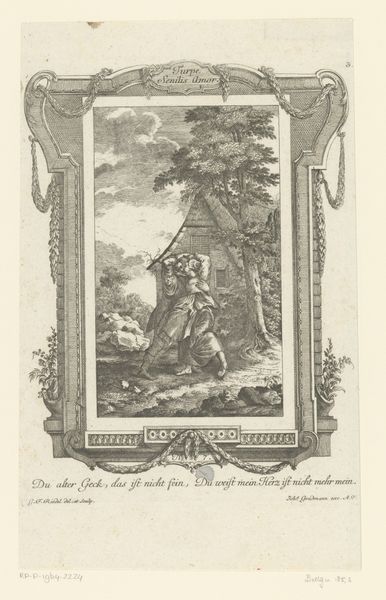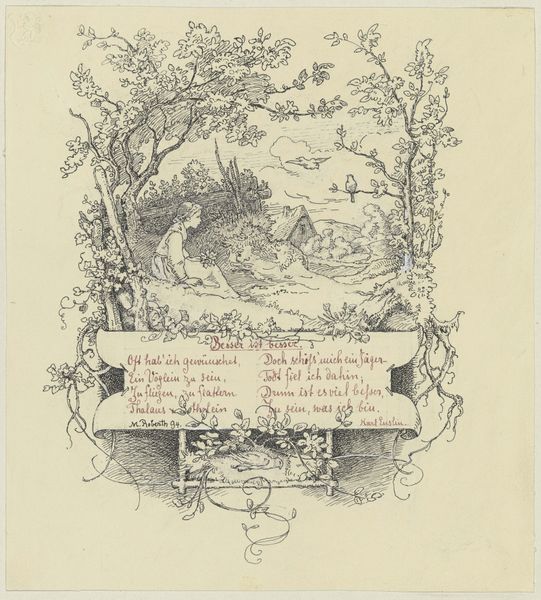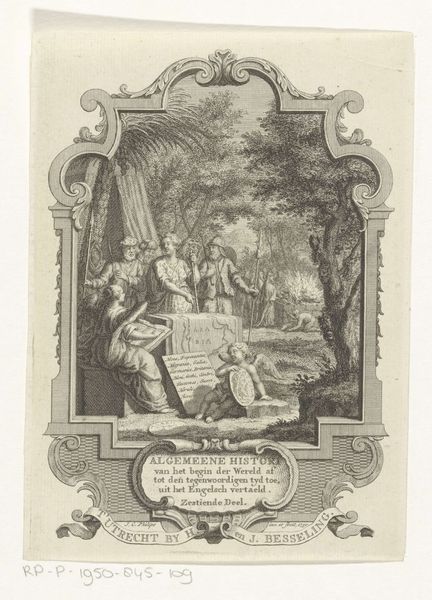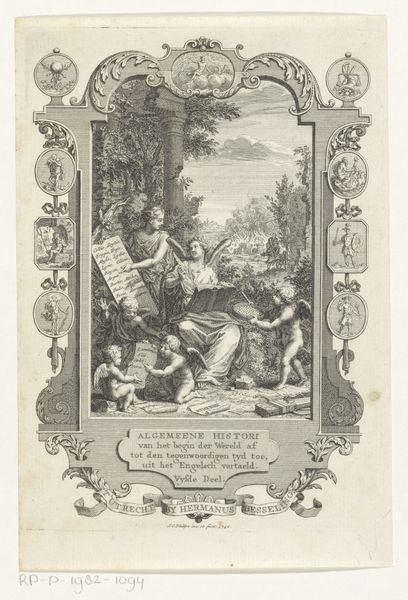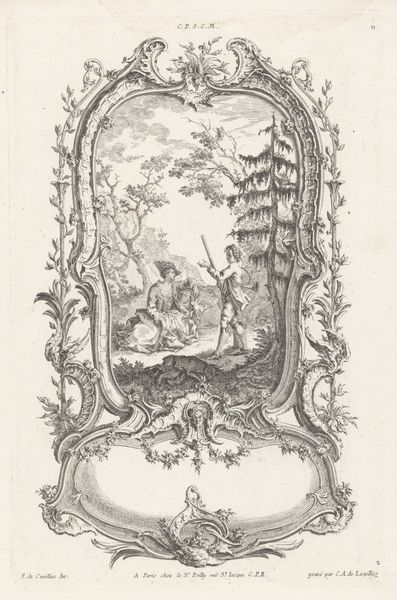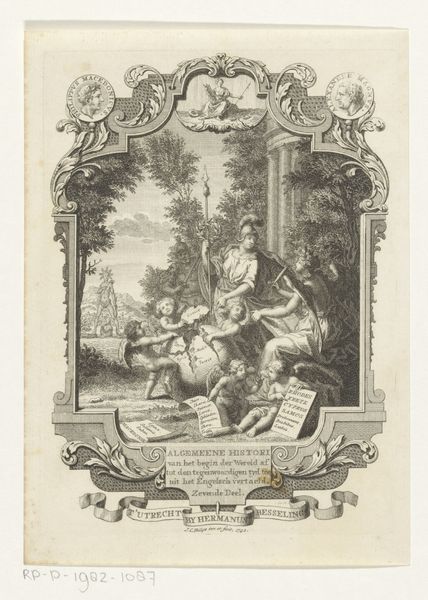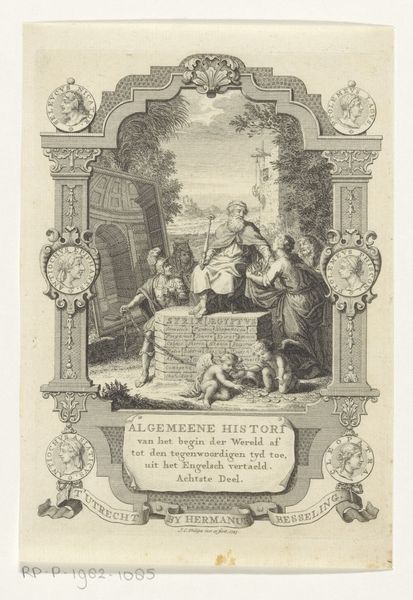
drawing, pen, engraving
#
drawing
#
pen drawing
#
pen
#
cityscape
#
genre-painting
#
engraving
#
rococo
Dimensions: height 359 mm, width 233 mm
Copyright: Rijks Museum: Open Domain
Curator: This piece, "Dansend paar," which translates to "Dancing Couple," is a 1745 pen drawing, an engraving really, by Carl Albert von Lespilliez, now residing at the Rijksmuseum. It’s delicate, isn’t it? Editor: Intricate. The way the artist used a very clear division in values makes the characters pop. Yet there’s a real coldness to the overall feeling of the image—is that odd to say? Curator: Not at all. Consider the era. Lespilliez was working during the Rococo period. Everything was ornament and extravagance; from what the folks wore to the architectural details framing their lives. Notice how even nature bends to an almost unnatural sense of refinement in the piece, which would imply those characters lead constrained and highly ornamented lives. Editor: Which really impacts how labor is regarded—everything has to look effortless and light. So we see here labor stratified through its materials: pen, paper, engraving tools. How do these refined processes, tools, and material itself justify a strict social structure? Curator: Good question. Looking closer, the landscape behind the dancing couple almost looks to me like an idealized dreamscape—a playful arrangement of classical ruins with these theatrically posed figures in the forefront. Editor: Is it an escape, though? They're performing wealth more than escaping to somewhere authentic. Consider all that’s needed to put on this facade of idyllic leisure. This piece really emphasizes that class structure, if you notice those less prominent characters in the far-left of the frame. Their bodies have been abstracted. It’s this lack of focus on the working bodies of this imagined civilization that interests me here. It is interesting to notice how such a rigid border of leaves could also seem protective to those in this idealized scene. Curator: It’s true, they are trapped within their gilded cage in some ways. Editor: Ultimately, thinking of the dancing couple and labor is fascinating—such images become important as justifications. We justify labor based on leisure in turn… This creates such interesting cycles of production and exploitation in this picture. Curator: It certainly gives new meaning to the phrase "dancing through life," doesn't it? It's like the artist has embedded layers of meaning into every delicate line.
Comments
No comments
Be the first to comment and join the conversation on the ultimate creative platform.
